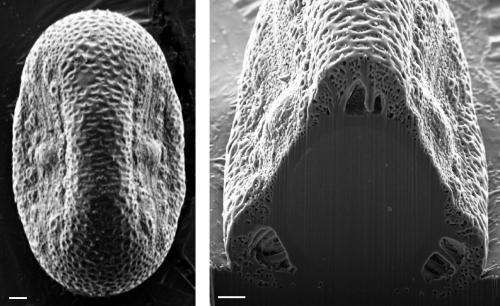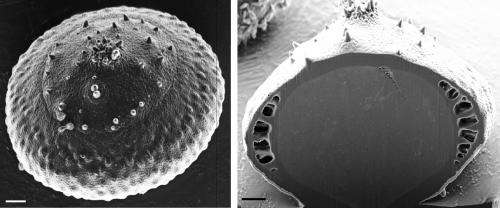Global first as Witsies split pollen

Wits researchers have become the first to cut sections through pollen grains and make it possible to view a three dimensional image of the internal wall. This positions them to determine how the characteristics of the internal wall help to classify plants of particular interest.
PhD student Alisoun House has become the international pioneer of this technique with her research on Acanthaceae, a notably eurypalynous (wide range of pollen features), large family of plants whose classification remains contentious.
It's difficult to find features that define Acanthaceae as a family but one of the features that has been used is pollen. Until now, all of the research has been done by looking at the external features of the pollen – what it looks like on the outside.
Under the supervision of Professor Kevin Balkwill, House used a focussed ion beam-scanning electron microscope (FIB-SEM) to slice through the pollen grains of species belonging to Acanthaceae. She then used an ordinary scanning electron microscope (SEM) to look at the inside walls exposed by the cut.
'Kevin had the idea that this microscope could be used. People have used it to look at fossilised pollen but it's the first time it's been done on fresh pollen from living plants,' says House.
The FIB-SEM is like an ordinary SEM but where the SEM uses a focused beam of electrons to image the surface of a sample in the chamber, the FIB uses a focused beam of ions to cut a section through a sample in a chosen position. Wits has one of only two or three FIB-SEMs in the country.

House's experiments proved that it was possible to use the technique to get a three dimensional image of the internal wall structure of the pollen grains.
'We can now see features in the internal wall that we couldn't see before using older technology which afforded only thin, two dimensional slices,' says House.
She will now investigate whether the images are able to further prove similarities between different plants within the family, making the technique a good taxonomic tool. The hope is that these newly visible features of the internal walls of pollen grains will add to the body of information and enable more accurate classifications.
Provided by Wits University

















